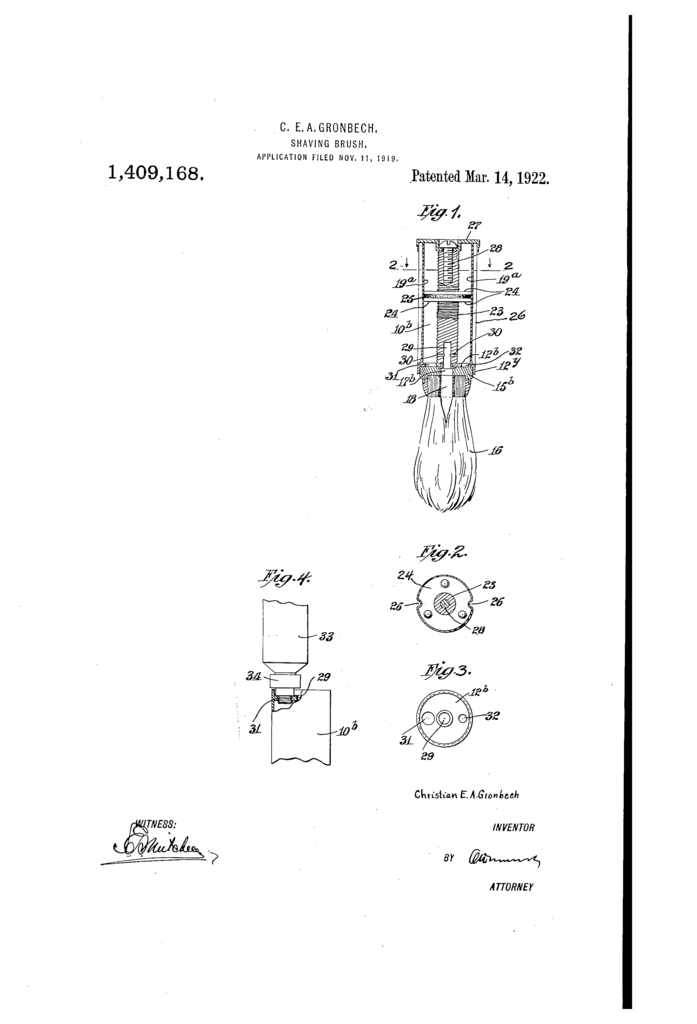Today’s patent isn’t all that unique, apart from being invented by the same gentleman whom patented the travel razor I looked at last Thursday. It is one of the recurring self-feeding or fountain shaving brushes – of which I’ve snarked on several before1 – and the claimed improvement was in the way it was made.
The principal object of the invention is to provide a simply constructed and efficiently operating device, which is sanitary in use, sightly in appearance and may be economical manufactured.
Christian E A Gronbech, US 1,1409,168

As can be seen from the drawing, the handle of the brush is hollow, with a threaded rod down the centre. The cap on the base of the handle is secured to the rod by means of a screw – allowing the rod to be turned – and a plunger or piston rides on the rod. A pair of longitudinal indentation – or ridges, if you prefer – is pressed into the sides of the handle (refer to figure 2 on the drawing) for the plunger to ride on as it’s screwed up and down.
The plunger itself is a sandwiched construction, consisting of two disks with a washer between them. While the patent text don’t specify, I suspect that the two disks (24) was meant to be metal while the washer was made of rubber – thus creating a seal against the sidewalls of the handle.
The knot sits in a base (15) which is secured to the handle by means of screw threads (12y), and can be removed by the user – has to be removed in fact, in order to refill soap paste. The base has a hole in the middle to allow soap paste to enter the brush.
As the cap is turned and the plunger pushes towards the knot, the soap paste in the handle is forced past openings (ducts and an axial bore) in the rod and into the knot, allowing the user to lather up and get shaving.
When the handle is empty of the soap paste, the user is meant to unscrew the knot, move the plunger all the way to the back of the handle by means of the cap, and refill the handle from a small tube screwed into a threaded hole under the knot – an air hole allowed for the air in the handle to be expelled during this operation.
Looking at the drawing, it’s obvious that most of the parts can be constructed by stamping sheet metal and off the shelf pieces (like the screw rod and screw), allowing for fast, inexpensive manufacture with minimal machining. The handle can even be a length of extruded aluminium if someone wants to make this today, and it don’t even have to be round as long as the plunger is a tight fit (if it’s not round you wouldn’t necessarily need the pair of ridges either).
Patented at about the same time as his handleless travel razors, Gronbech’s self feeding brush would have made a nice addition to the dopp bag since it would have done away with the need to carry a tube of soap separably. However it does suffer from the same fault as all self feeding shaving brushes I’ve seen so far; the soap is introduced to the base of the knot, not towards the tips where the lather is actually built.
- See for example “A 1849 self feeding shaving brush!“, “Soap-dispensing shaving brush“, and “Fountain shaving brush“.
